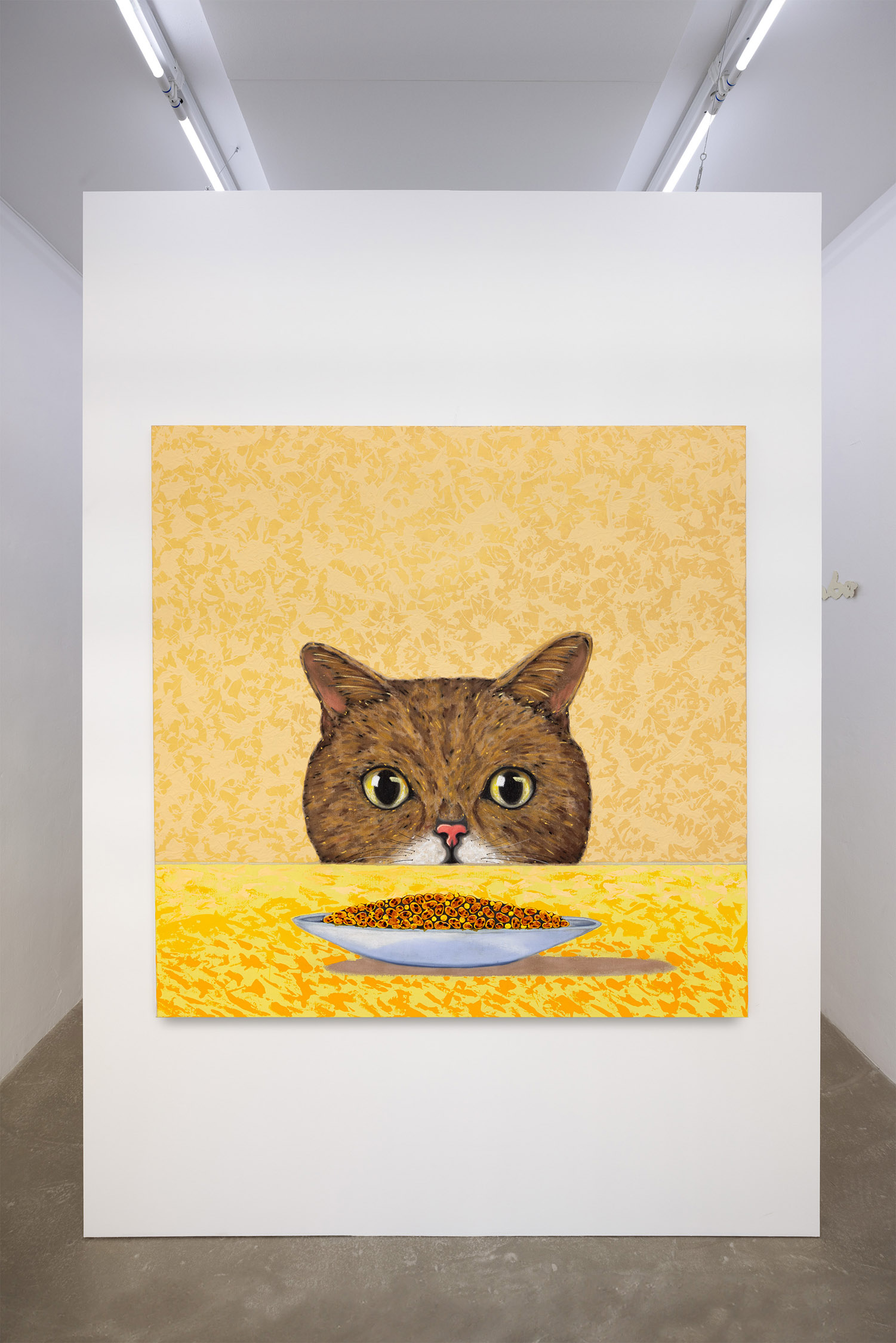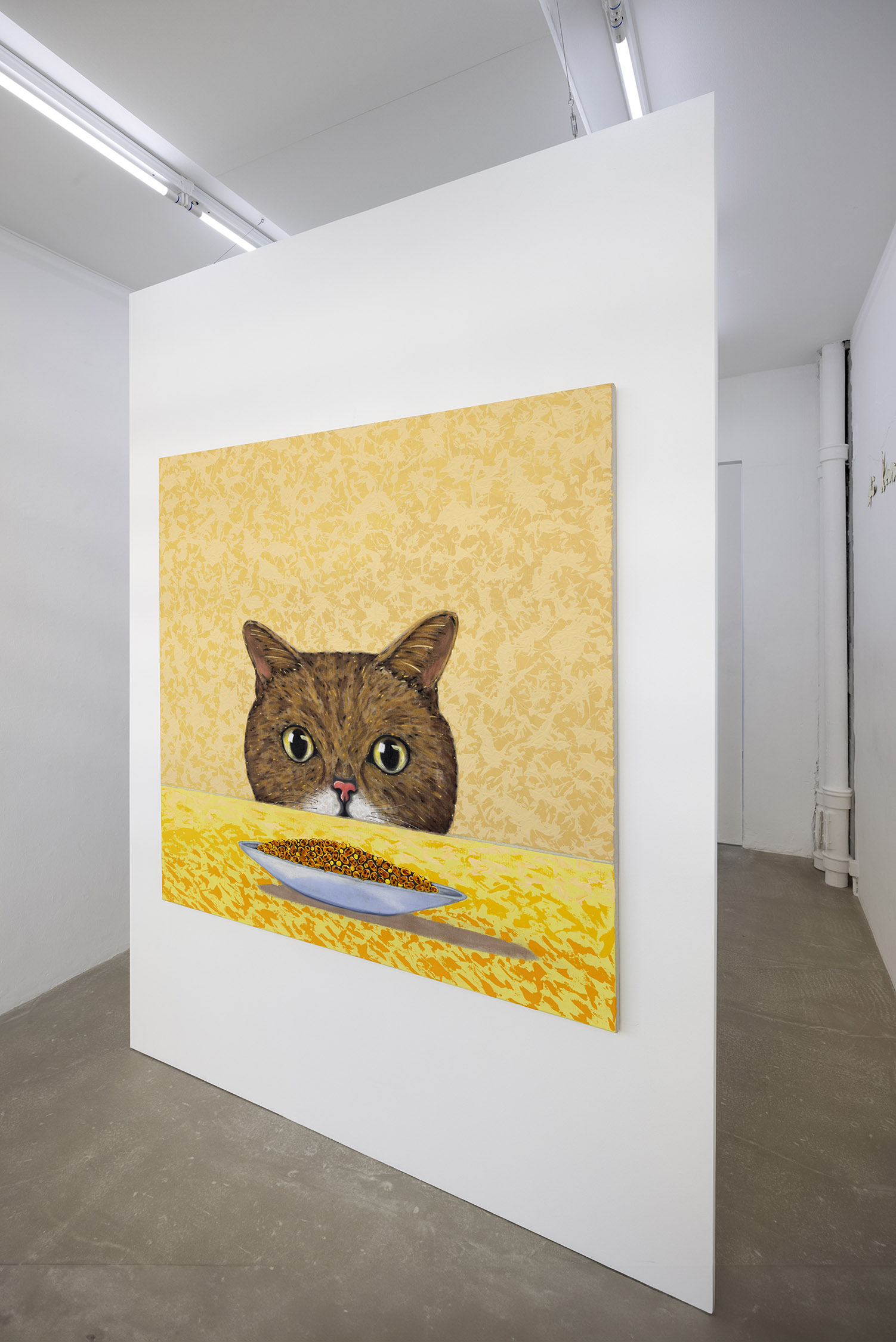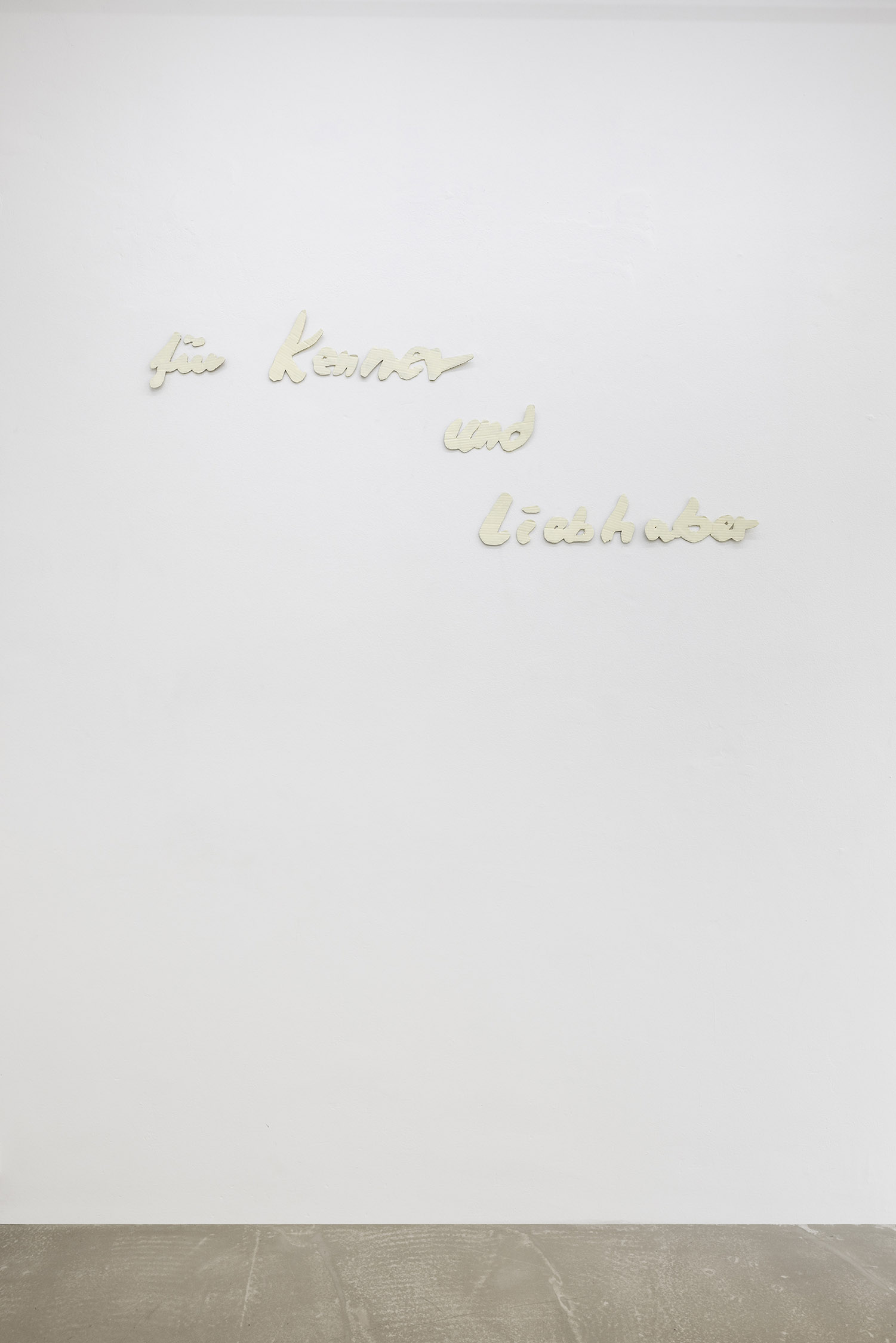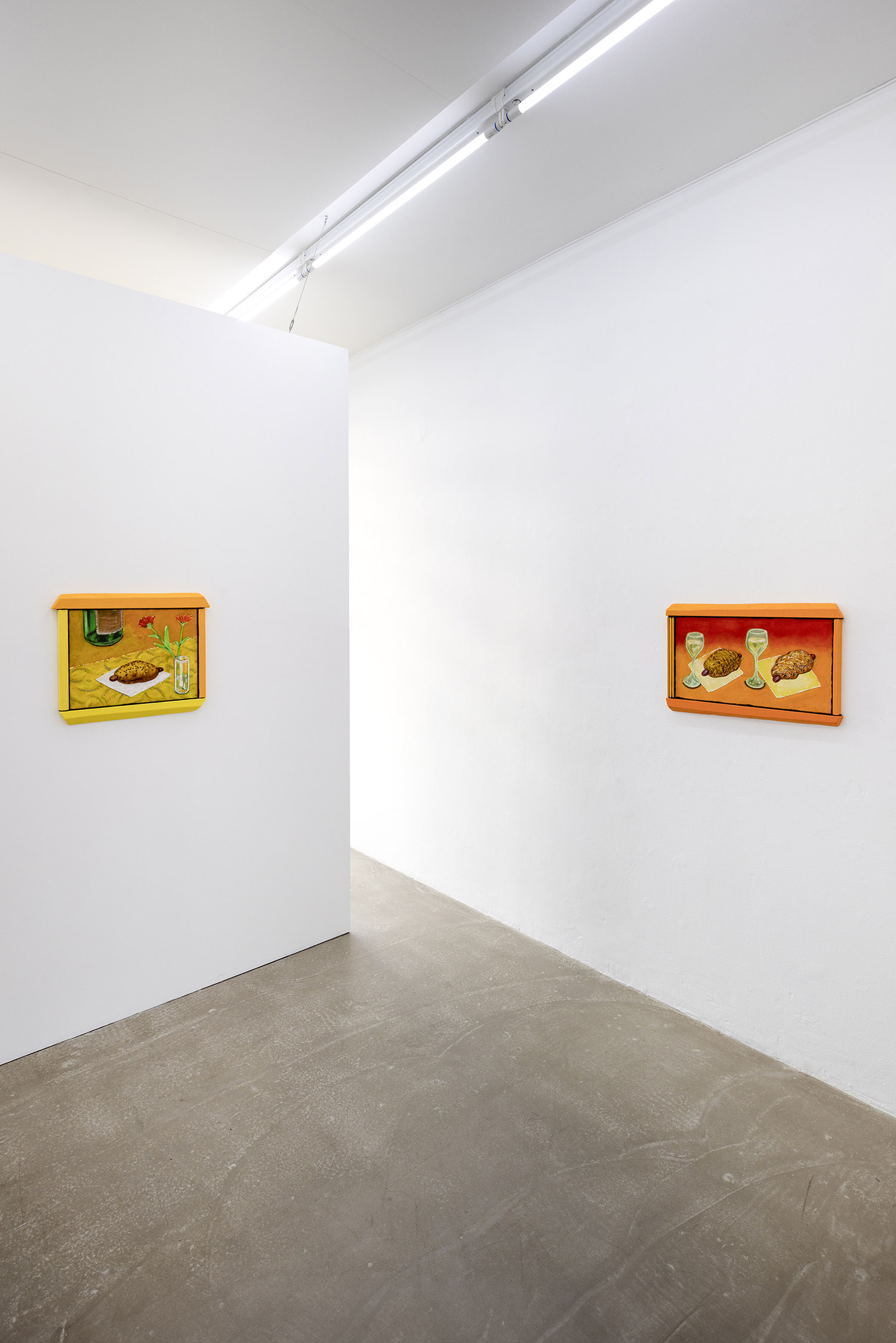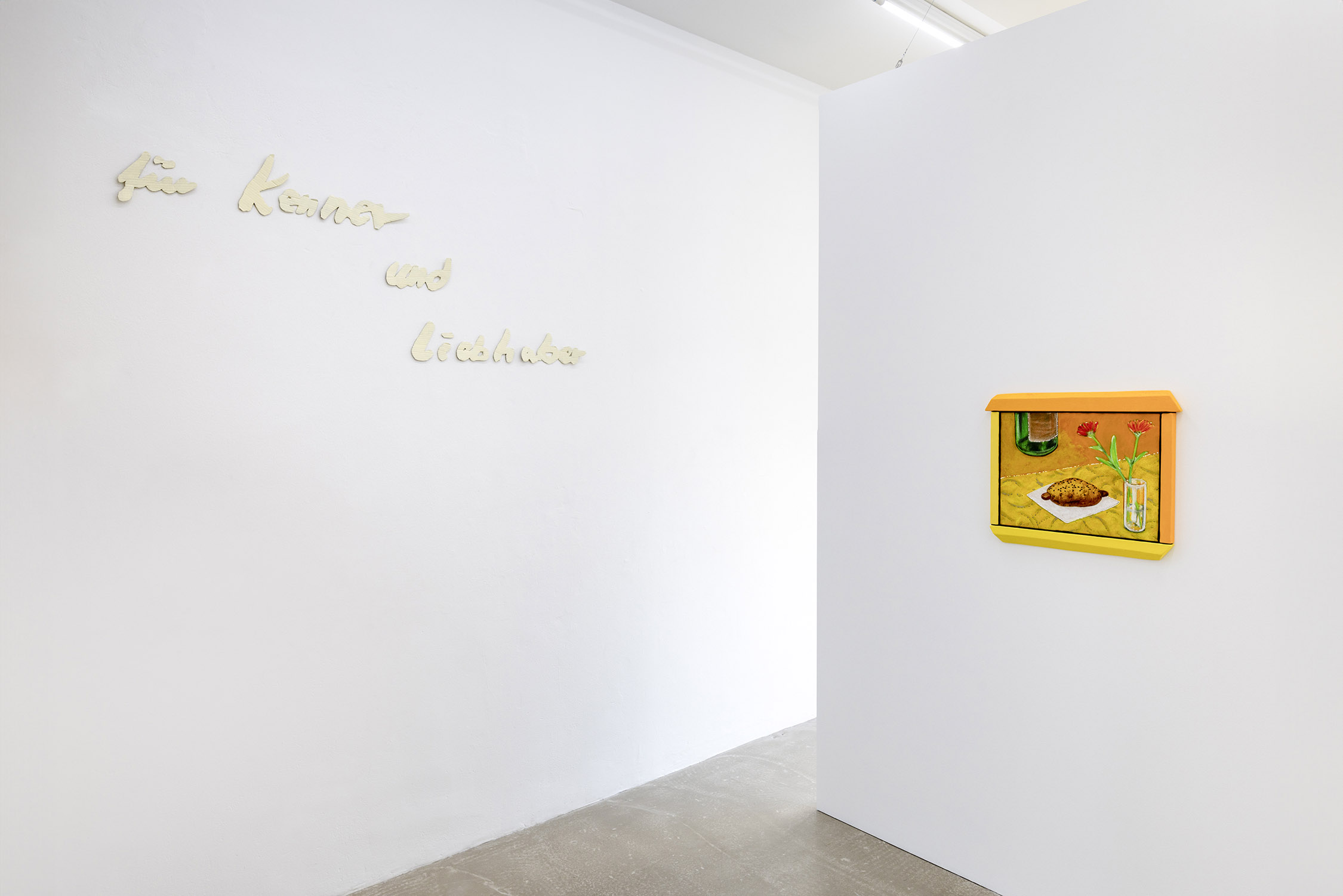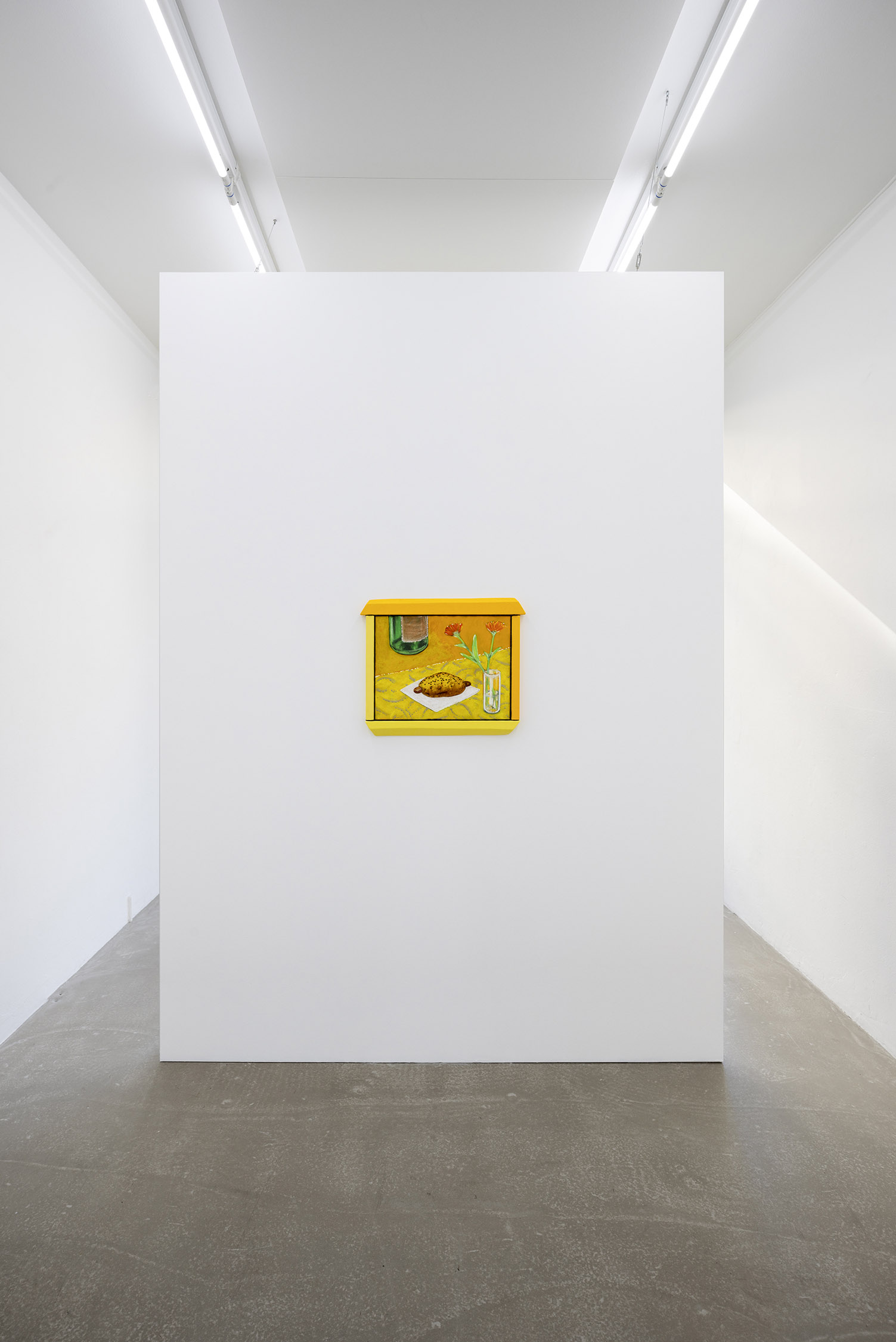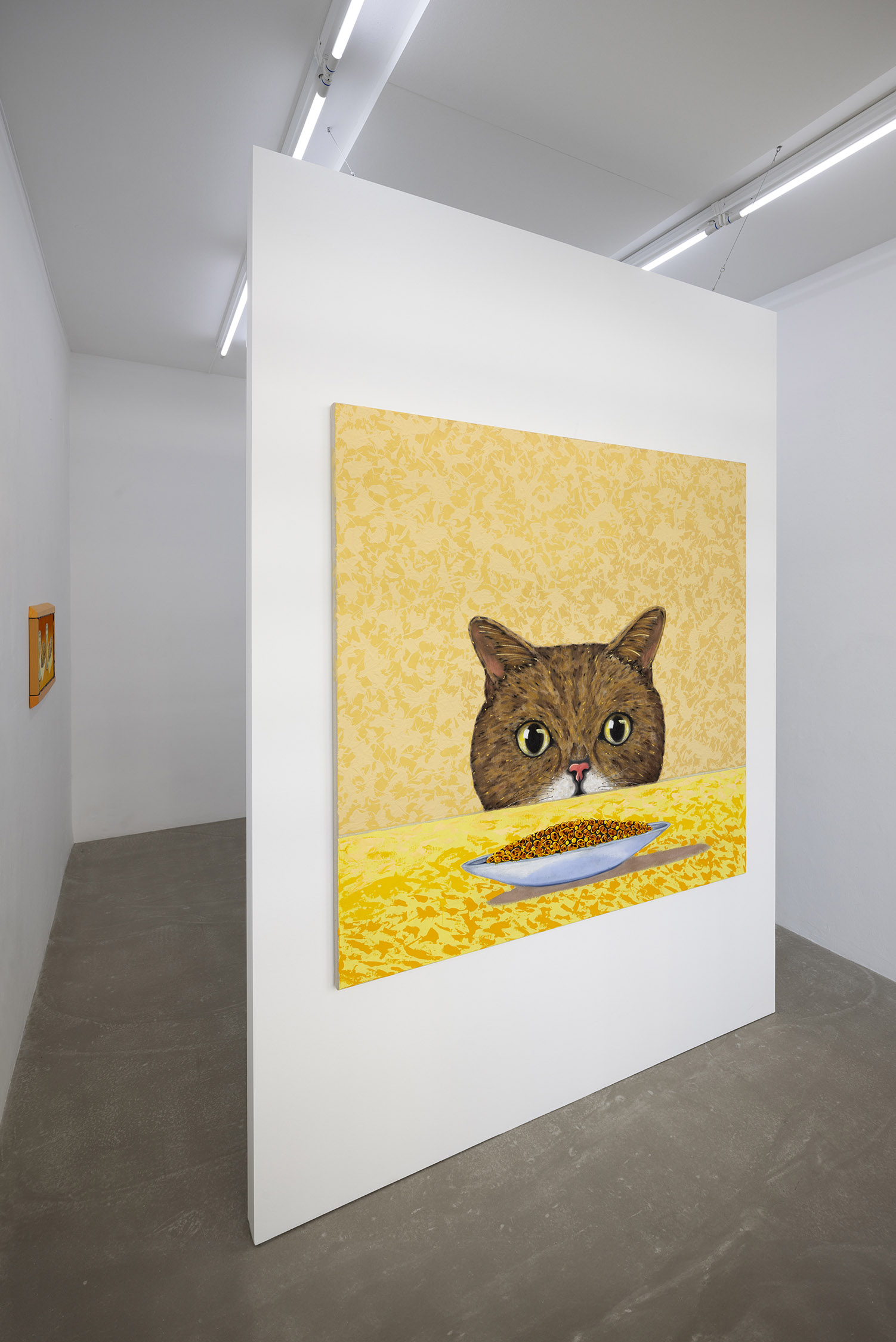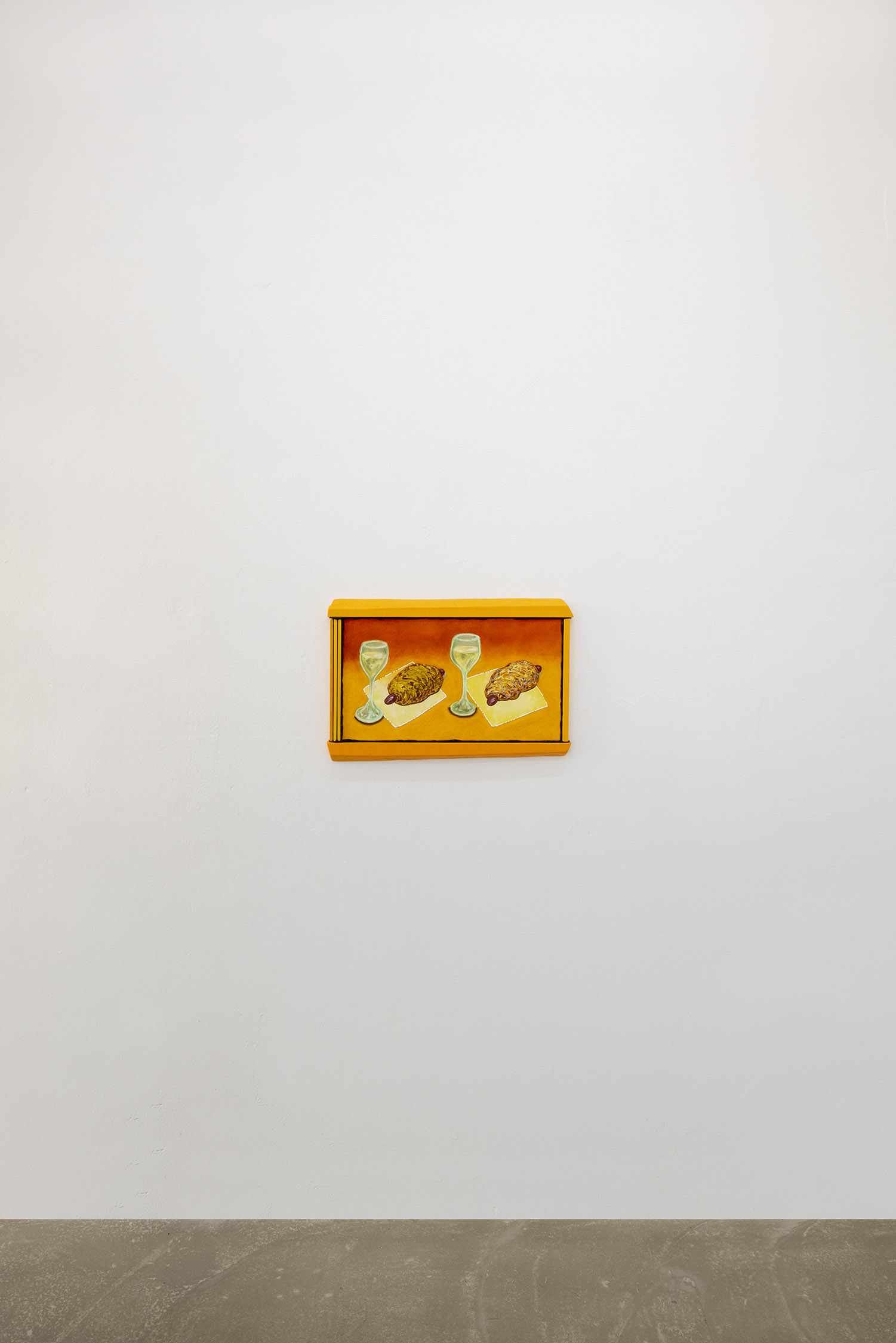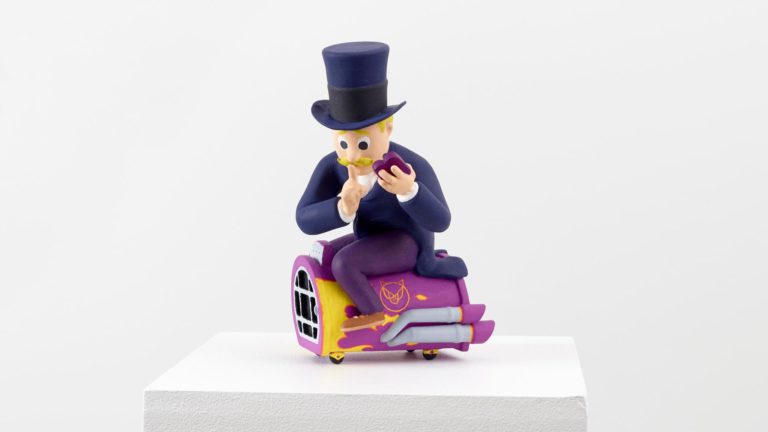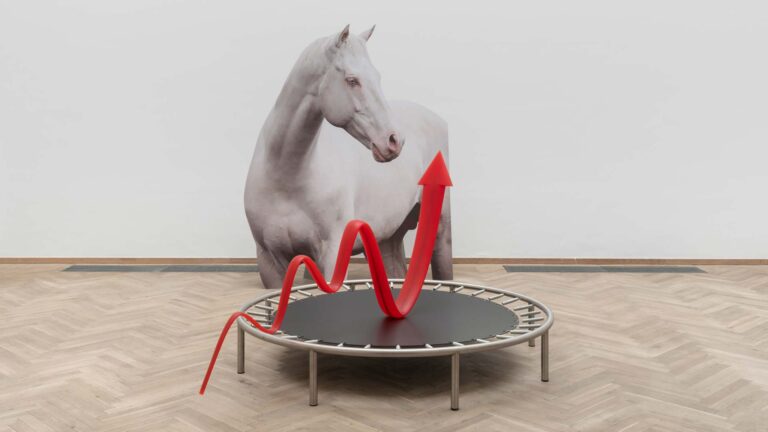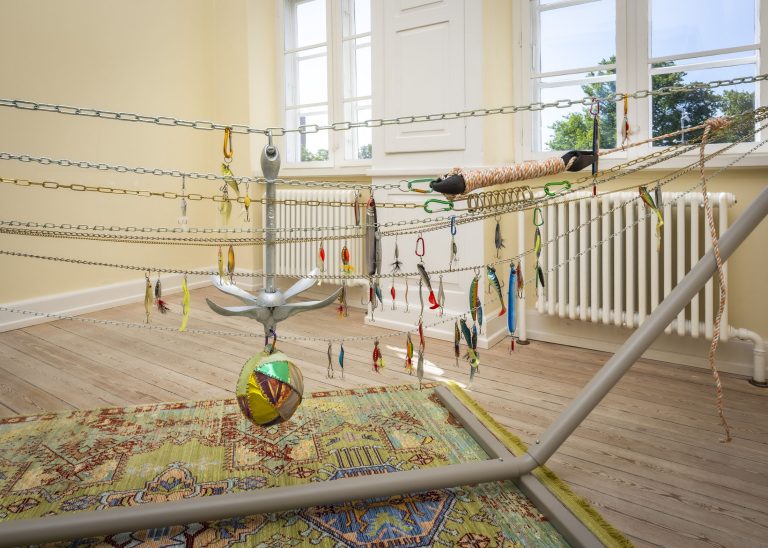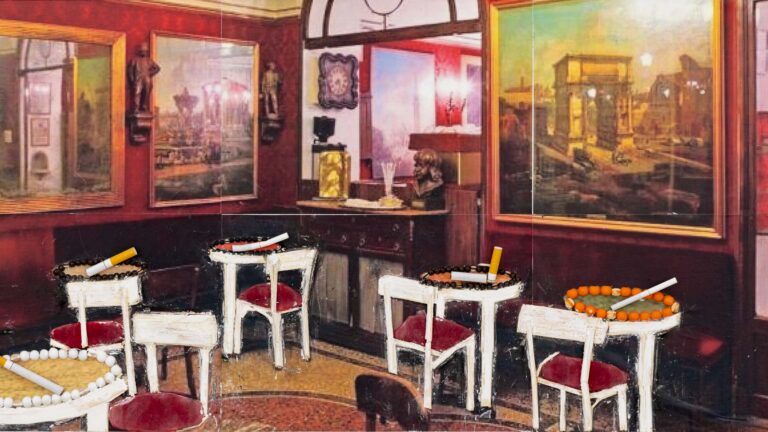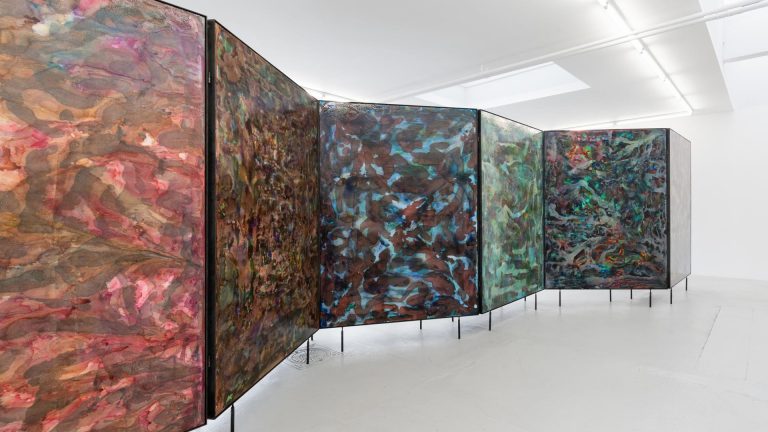Whisk d’Or is a fusion of the well-known cat food brand Whiskas and the French term for gold, symbolizing a blend of everyday commercialism with notions of luxury and allure. In his second solo exhibition at palace enterprise, Magnus Andersen merges the classical traditions of still life and portraiture with the psycho-visual language of contemporary advertising.
At the entrance, visitors are greeted by the imposing presence of Whisk d’Or’s mascot—a giant cat peering out from behind a plate of pâté. This larger-than-life figure, painted with excruciating detail, emerges from an abstract, pastel-yellow background consisting of loosely applied palette knife swatches. The cat’s direct gaze and intricate realism are juxtaposed with the soft, hypnotic patterns of lemony Rorschach surrounding it. Modeled after the iconic Whiskas tabby, Andersen’s cat confronts the viewer head-on. As far as feline nutrition is concerned, Whiskas is the equivalent of fast food—its suspicious quality only matched by its wide accessibility on every supermarket shelf. In Andersen’s vocabulary, the advertisement cat exposes the mechanisms through which consumer desire is manufactured. The interplay between cuteness and softness hints at an underlying domestication of capital, where coziness teeters on the edge of eeriness.
Andersen’s work also highlights how market logic seems to flatten our sense of historicity and difference. The vast array of beautiful objects and earthly pleasures displayed in baroque vanitas painting served as a reminder of human mortality and the futility of material pursuits. Here, however, the classical skulls, flowers, wine, cheeses, and hams have been replaced by pølsehorn—a simple classic among Danish snacks. In one of the works, two almost identical pølsehorn lay beside one another. They are painted with pastose, semi-circular swatches of paint, bulging outward and digging into the canvas simultaneously, amounting to an encounter between the seamless copy/paste logic of digital images and Jean-Paul Sartre’s protagonist in Nausea (1938), whose existential dread is catalyzed by the act of consuming a pastry. On the opposite wall, a slogan cheekily reads “for connoisseurs and amateurs.” As is typical in Andersen’s images, satire serves to express the coexistence of opposites, while the overly meticulous rendering of everyday objects charges them with a libidinal aura, encouraging us to reconsider how values like beauty and authenticity are assigned.
—Astrid Wang
Magnus Andersen draws abundantly from a wide range of art historical and popular cultural references, spanning Flemish still lifes, 17th-century baroque and classical music, to color field painting and advertising aesthetics. Andersen renegotiates mundane and easily recognizable signifiers of contemporary visual culture and deliberately exaggerates them to a point of uncanniness. Cultivating humor and seriousness equally, his work engages with an accelerated nostalgia emblematic of post-industrial consumerism.
Magnus Andersen (b. 1987) lives and works in Copenhagen. He studied visual art at the Royal Danish Academy of Fine Arts in Copenhagen and Städelschule in Frankfurt am Main. Recent exhibitions include Liste Art Fair (Basel), Kunstverein Wiesbaden (Wiesbaden), Den Frie, (Copenhagen), Gio Marconi (Milan), and Tranen Space for Contemporary Art (Gentofte). In 2025, Andersen will open an extensive solo exhibition at Kunsthal Rønnebæksholm (Næstved).

